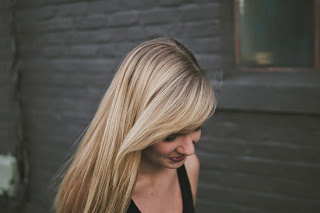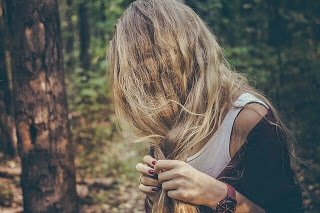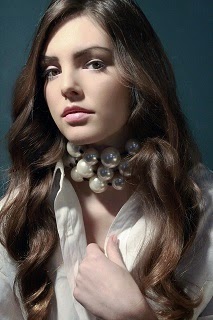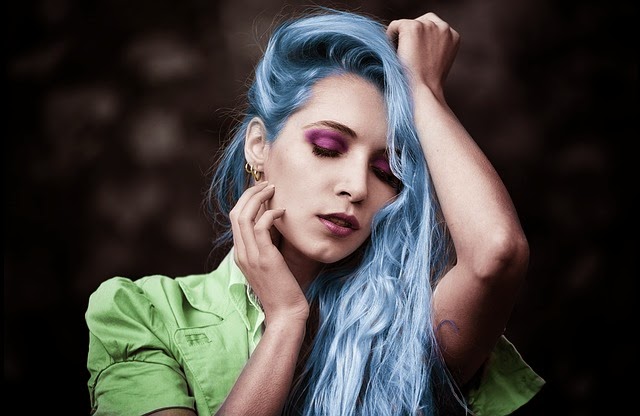 Dyed blonde hair is beautiful, but requires special care and maintenance to keep it looking its best. It is prone to fading. dryness, frizz, and other problems that come from the lightening process used to achieve it. Your blonde hair doesn't have to look frizzy and feel dry though.
Dyed blonde hair is beautiful, but requires special care and maintenance to keep it looking its best. It is prone to fading. dryness, frizz, and other problems that come from the lightening process used to achieve it. Your blonde hair doesn't have to look frizzy and feel dry though.Blonde hair problems
When you dye hair blonde, especially if your hair is naturally dark, a lot of lightening is required to lift your natural pigment and take it light enough. Bleach or dye is used to achieve this lightening, but the end result is the same. Damage occurs as a side effect of the process with either method.
This damage can be superficial or structural, and the type of damage that has occurred dictates what sort of problems you can face, as well as what form of treatment is best for resolving the condition and getting your hair to a healthier state.
Dyed blonde hair can suffer from:
- Rapid color loss
- Dryness
- Frizz
- Split ends
- Loss of elasticity
- Breakages
Types of damage
Damage to your hair can be considered to be structural, confined to the surface of the hair shaft, or a combination of both. Structural damage is the worst kind because this involves destruction of the protein your hair is made out of, causing your hair to be weak and prone to breakage. If this type of damage becomes worse, hair can literally stretch apart like over-cooked spaghetti.
Damage to the surface of your hair is more benign as it doesn't have a major effect on the strength of your hair, but instead will affect moisture balance and color retention. Damage like this occurs to the cuticle layer which normally acts like scales to seal the hair against the exterior environment. When the cuticles are damaged, they don't close properly and your hair is much more prone to dryness, frizz, and porosity issues.
Both kinds of damaged in dyed blonde hair can be dealt with effectively though, and even highly damaged hair can often be saved without having to resort to a pair of scissors.
Repairing damage
Dyed blonde hair that is damaged should be treated immediately because the damage won't just go away over time. The longer you leave it, the more you will exacerbate the problem by allowing your hair to remain in a weakened condition.
To treat weakness in blonde hair, the best product is a protein treatment. This kind of treatment adds protein back into your hair and patches up weak areas. The result is that over time, strength will gradually return and your hair will suffer less breakage.
If your hair is heavily damaged, it should be treated 1 - 2 times a weak with a protein treatment at first until it begins to show signs of recovery. Once this occurs, you can cut this kind of treatment back to once a month to maintain strength and keep your dyed blonde hair from breaking.
Damage to the cuticles isn't exactly treatable however, as the cuticles can't be repaired once they are destroyed. This kind of damage is best addressed with symptomatic treatments to reverse any dryness or frizz that is occurring, as well as smooth out your hair and seal it.
To do this, apply leave-in conditioners to address dryness. Follow this up with a good hair serum to lock this moisture into your hair and protect your hair from the environment. Hair serums act like a barrier to keep moisture where it is needed, as well as protect your hair from humidity and smooth out frizz. They are especially useful before styling with a straightener or curling rod as they protect against heat damage and heat will actually improve the smoothing the product provides.
How to repair bleached hair - More in-depth information for repairing your hair...
How to get healthy hair - More tips for treating common problems in natural or dyed hair...
Maintaining the color of dyed blonde hair
Dyed blonde hair tends to be more prone to fading compared to darker colors. This is partly because of damage that makes the hair more porous, and partly due to the nature of the dye used to tone blonde hair. Blonde dyes are light and delicate, and it only takes a little fading for brassiness to begin to show.
As you don't want to increase damage any further or spend all your time maintaining your hair, dye is not always a good option for maintaining the color of your blonde hair; especially if you're seeing rapid fading. In this case, products like mousses and violet shampoos are just as effective yet non-damaging and don't take up anywhere near as much time.
A violet shampoo is an absolute must if you want to maintain a cooler shade of blonde and can't bear the thought of any yellow or gold tones appearing. However, you can also use them for maintaining warmer or neutral shades of blonde where you only want to soften this warmth. In this case, use the product less often by alternating with a plain shampoo, or dilute the shampoo down before using it so that less color buildup occurs.
Violet shampoo - Find out how to use violet shampoo to keep your hair toned...
Have another question about dyed blonde hair, or having problems toning it? Leave a comment for tailored advice...
More information:
- The benefits of keratin treatments -Keratin treatments strengthen hair and temporarily straighten it. Discover how to use them for smoother, stronger hair...
- Treatments for damaged hair -Looking for a treatment for your damaged hair? Discover some of the best treatments to get your hair back into shape.
- The best toner for platinum blonde hair - Maintaining platinum blonde? Igora's 9.5-1 products are pastel shades that can flawlessly tone light hair to a stunning silvery white...





